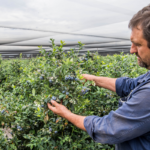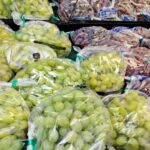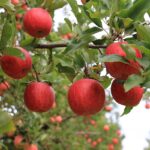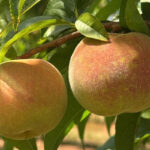Australian technology converts banana waste into electricity, fuel
In the Australian state of Queensland a fruit growers’ group is looking for funding to advance a bio-digester technology that converts banana waste into electricity or fuel. The Growcom project has already developed a working prototype it aims to take to the next level. CEO Alex Livingstone tells freshfruitportal.com if widely commercialized, the product could reduce costs for Australian growers and potentially benefit underdeveloped banana-growing countries. 
Around 20% of the Australian banana crop gets wasted every year, whether through harvesting or transport to the packing sheds, adding up to about 60,000 metric tons (MT).
In the face of this untapped resource and the challenge of rising fuel and energy costs, in 2005 the Australian Banana Growers Council (ABGC) – in collaboration with Ergon Energy - investigated whether bananas could be used as a feedstock to generate energy, through a process called anaerobic digestion.
The process works by taking damaged bananas or their stalks and breaking down carbohydrates in the absence of air, producing a mixture of methane and carbon dioxide.
With the help of funding from Queensland Sustainable Energy Innovation Fund (QSEIF), tests at the University of Queensland showed bananas were very suitable, yielding about 240 liters per kilogram of dry banana.
The resulting biogas was found to be an appropriate substitute for diesel fuel in combustion engines, with 40% methane and insignificant amounts of hydrogen sulphide and other contaminants.
Growcom came in for the next task, which was to apply these results on-farm in a practical way.
"That means building the digester from fairly readily available materials, and when it’s running it can’t have a tribe of men in white coats to keep it running," says Livingstone.
"It needs to be able to keep running in an agricultural environment, so we built a digester, we ran feedstock into it, we did produce methane, and we used that methane to power a fairly sizable generator and also to power some vehicles; we proved it works."
The product was a 460,000-liter anaerobic digester with the capacity to process 2,500MT of bananas per year, producing 85,000 cubic meters of methane.
Growcom estimates that with this level of output the biogas could continuously generate 35kW of power or meet the fuel requirements of 100 gas-converted vehicles.
Growcom contributed AUD$76,530 (US$79,661) to the project, while QSEIF gave AUD$187,370 (US$195,034). However, over three years it ended up costing a lot more than anticipated and Livingstone says Growcom has contributed to about half the total costs.
Rough weather events that followed such as cyclones, meant the project was put on hold for several years.
Looking to the future
Growcom is now ready to pick up where it left off, but Livingstone says the next stage will cost "hundreds of thousands of dollars".
"One of the things you identify in building a prototype is everything that needs to be done better. We have designed for a new feed system including some different pumps and bits and pieces, so they’ve all got to be retrofitted to the unit.
“That doesn’t mean we’re starting again, just that we’d designed for a new feed system including some different pumps and bits and pieces.
"If we got investment tomorrow and we could find the right project manager, you could probably have it up and running in a few months, because it has been running. It’s now just a question of making a few changes."
He says once the final working model is complete, the commercialization process will need more engineering expertise for tweaking the technology.
"Essentially at the moment what we use is a large bladder in the ground. That’s got some bonuses as it’s big, black and absorbs heat which is what you want, and it doesn’t stick up out of the ground so when you have cyclones they don’t destroy the facility.
"Being down in the ground has its drawbacks as it’s harder to get in to the bottom of the digester if you need to clean anything out. So there would be some engineering smarts that could be applied to that."
Livingstone adds there is also potential build a product that could be packed up into containers.
"You could take them around to places like Papua New Guinea where they’ve got plenty of heat, plenty of feedstock and not a lot of electricity; you could start supplying energy to underdeveloped nations on a village-by-village basis."
He says the benefits are high for develop nations too as the technology reduces greenhouse gases.
"Normally the feedstock is just thrown back on the fields and is allowed to rot there, so this would reduce greenhouse gases, save on power, and therefore you don’t have to generate as much out of your power stations.
"You can also use the water out of the digester for fertigation so you get the nutrients back in the soil but in a very controlled way, so there are a bunch of positives with it."












































